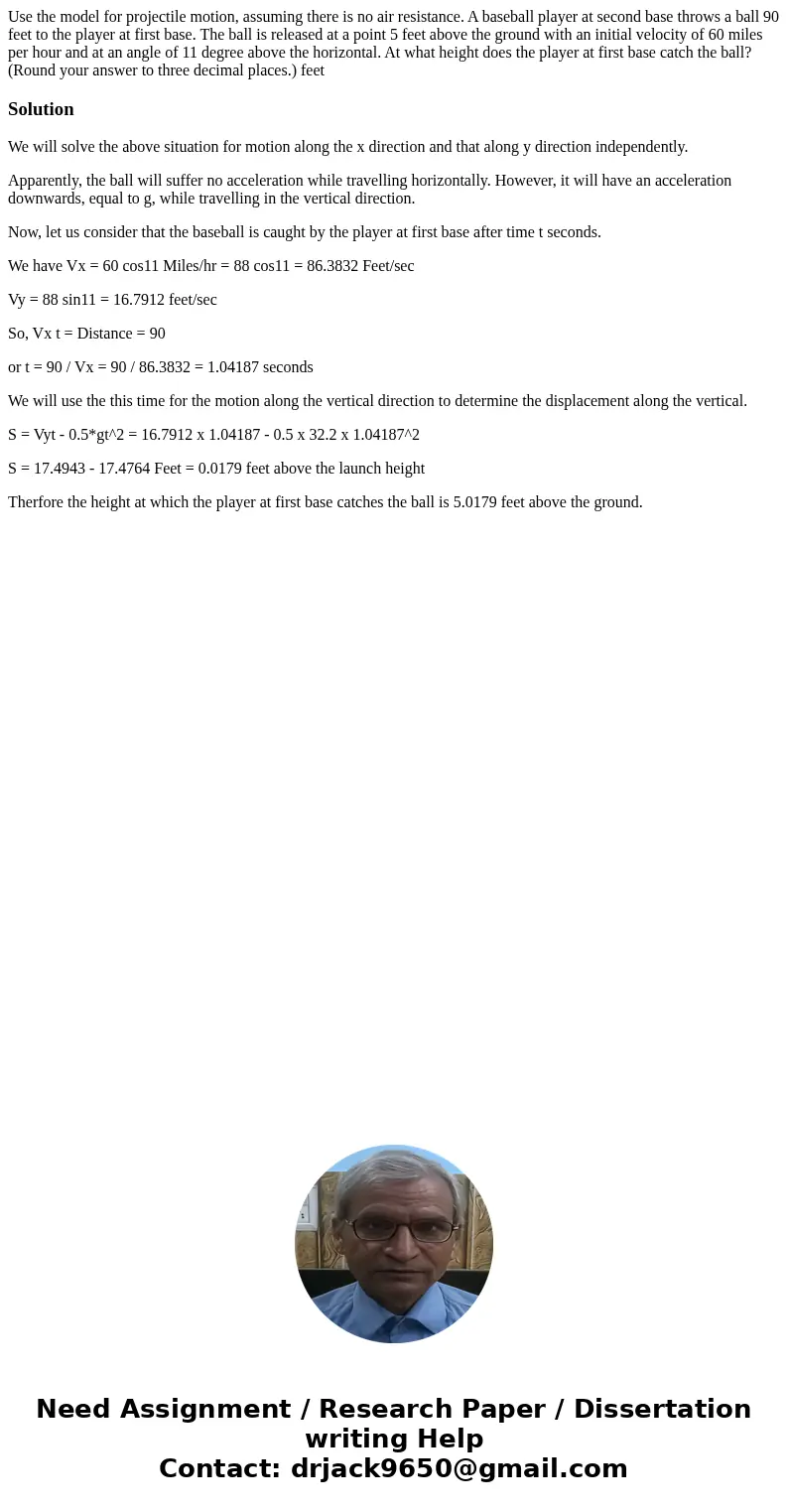Use the model for projectile motion assuming there is no air
Solution
We will solve the above situation for motion along the x direction and that along y direction independently.
Apparently, the ball will suffer no acceleration while travelling horizontally. However, it will have an acceleration downwards, equal to g, while travelling in the vertical direction.
Now, let us consider that the baseball is caught by the player at first base after time t seconds.
We have Vx = 60 cos11 Miles/hr = 88 cos11 = 86.3832 Feet/sec
Vy = 88 sin11 = 16.7912 feet/sec
So, Vx t = Distance = 90
or t = 90 / Vx = 90 / 86.3832 = 1.04187 seconds
We will use the this time for the motion along the vertical direction to determine the displacement along the vertical.
S = Vyt - 0.5*gt^2 = 16.7912 x 1.04187 - 0.5 x 32.2 x 1.04187^2
S = 17.4943 - 17.4764 Feet = 0.0179 feet above the launch height
Therfore the height at which the player at first base catches the ball is 5.0179 feet above the ground.

 Homework Sourse
Homework Sourse